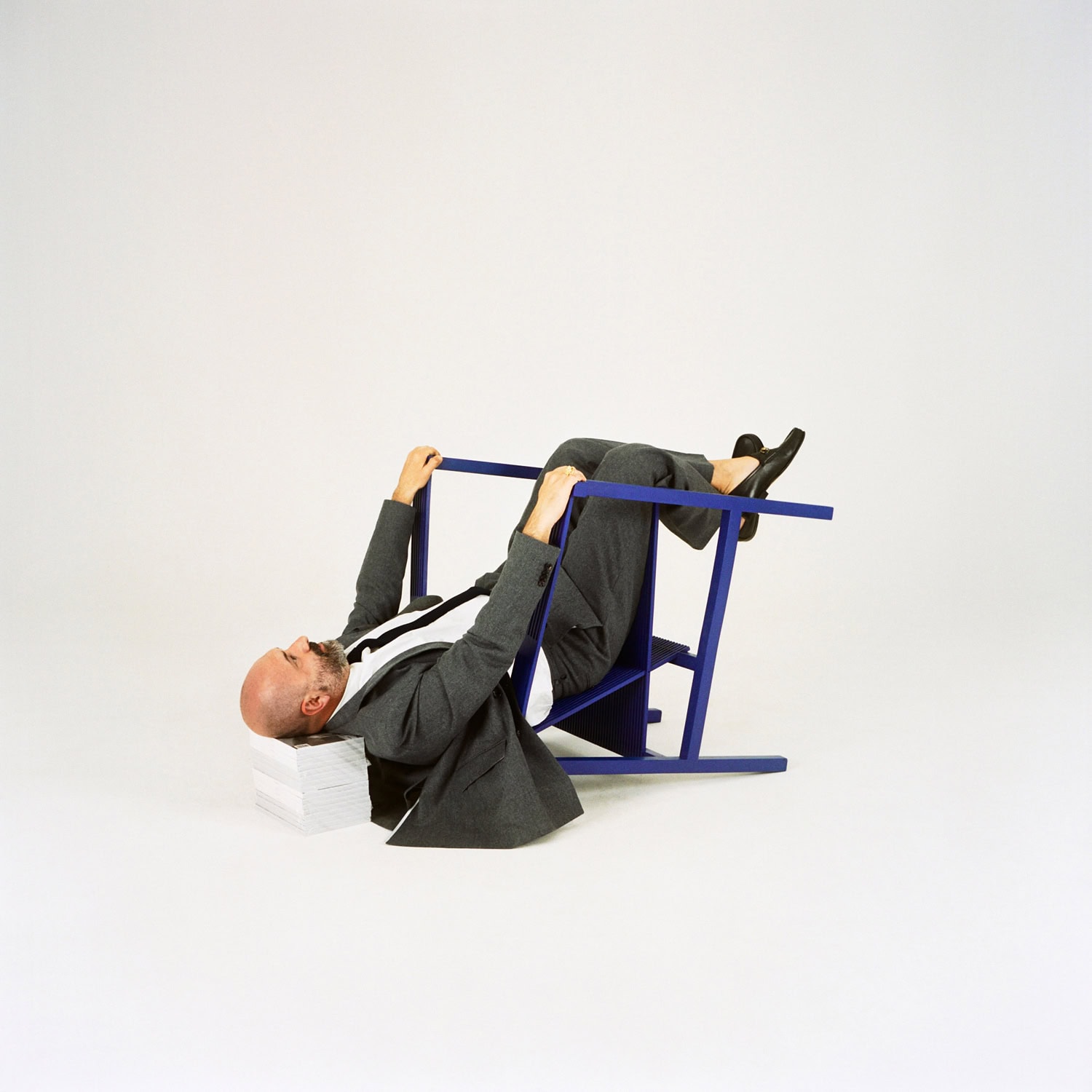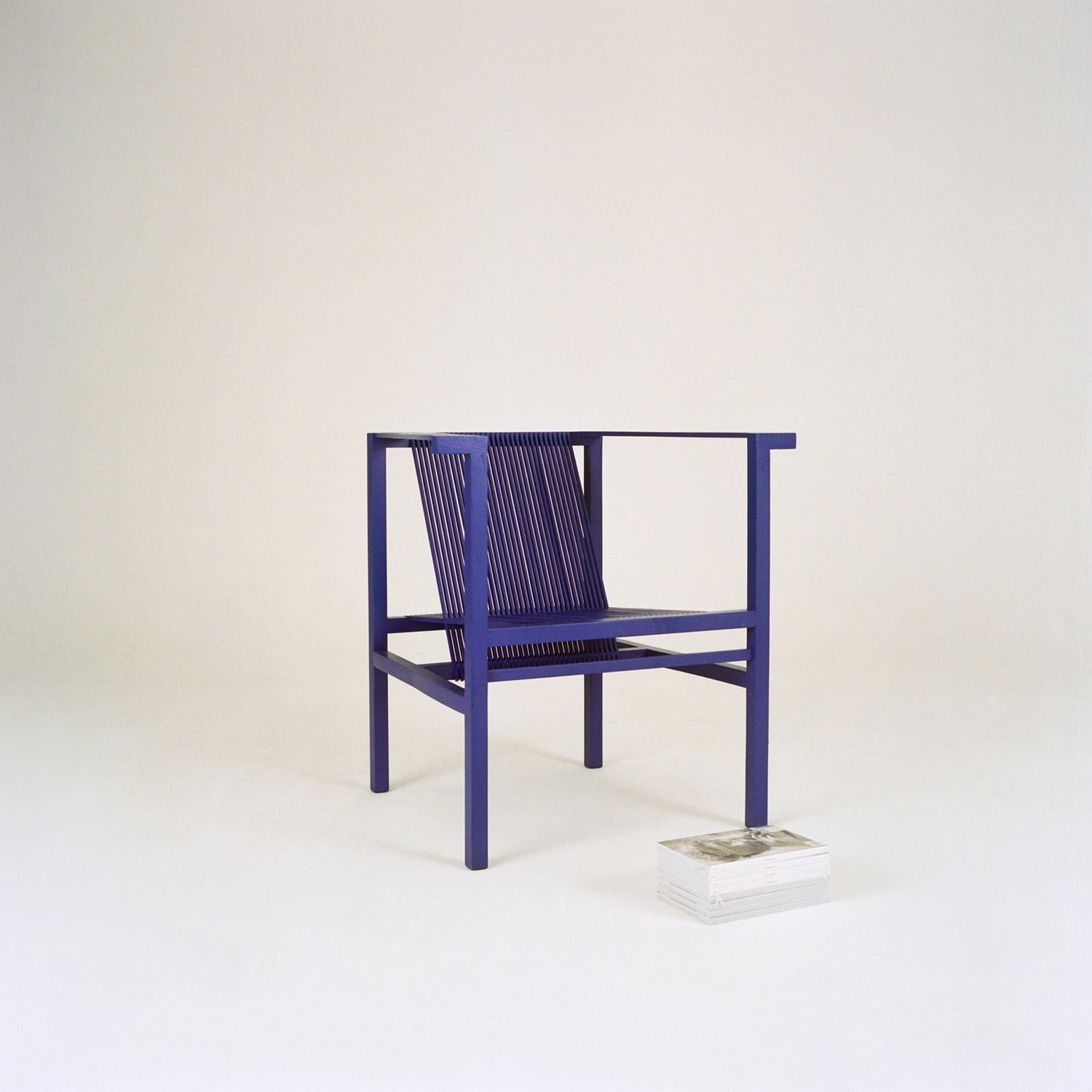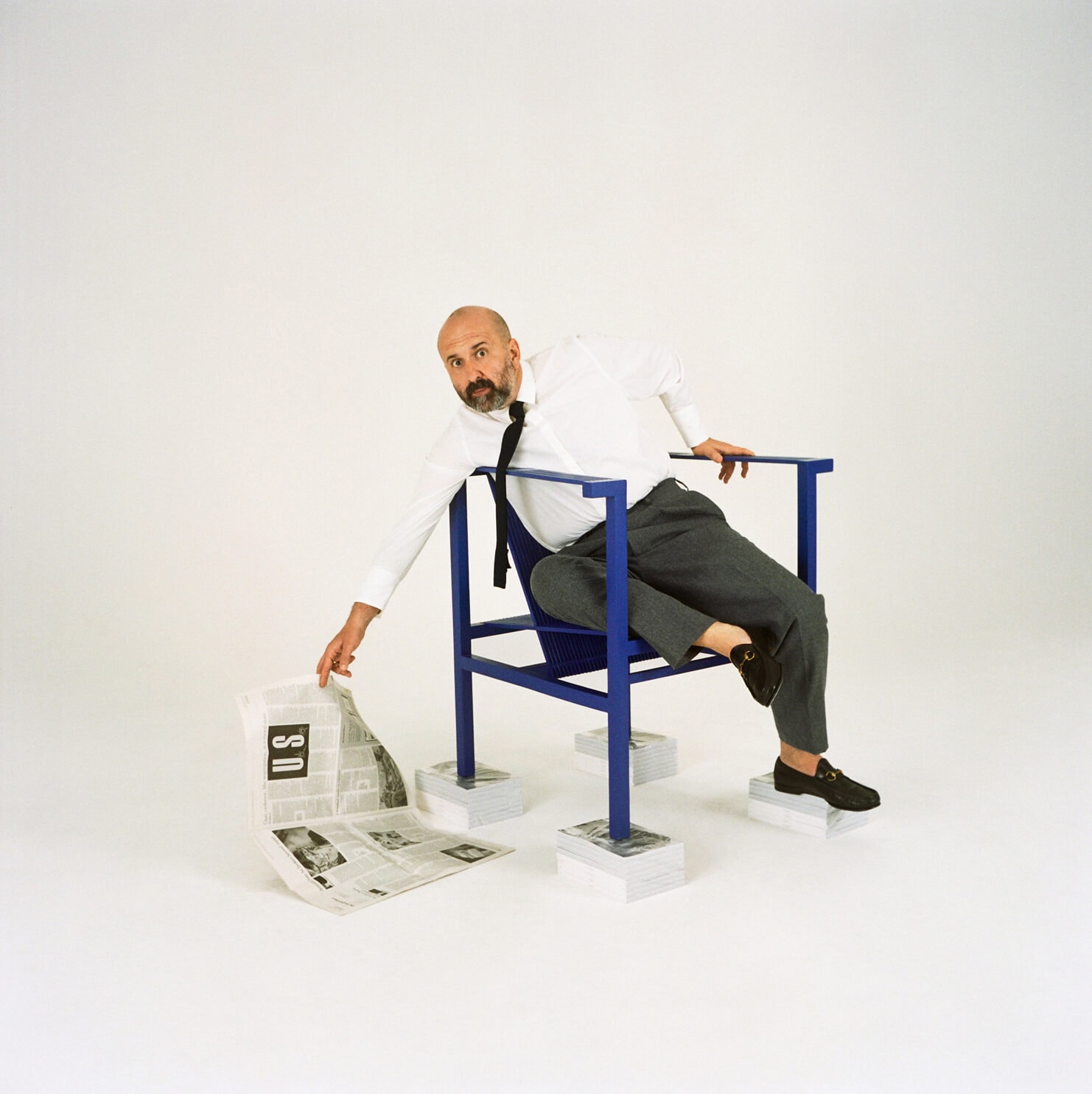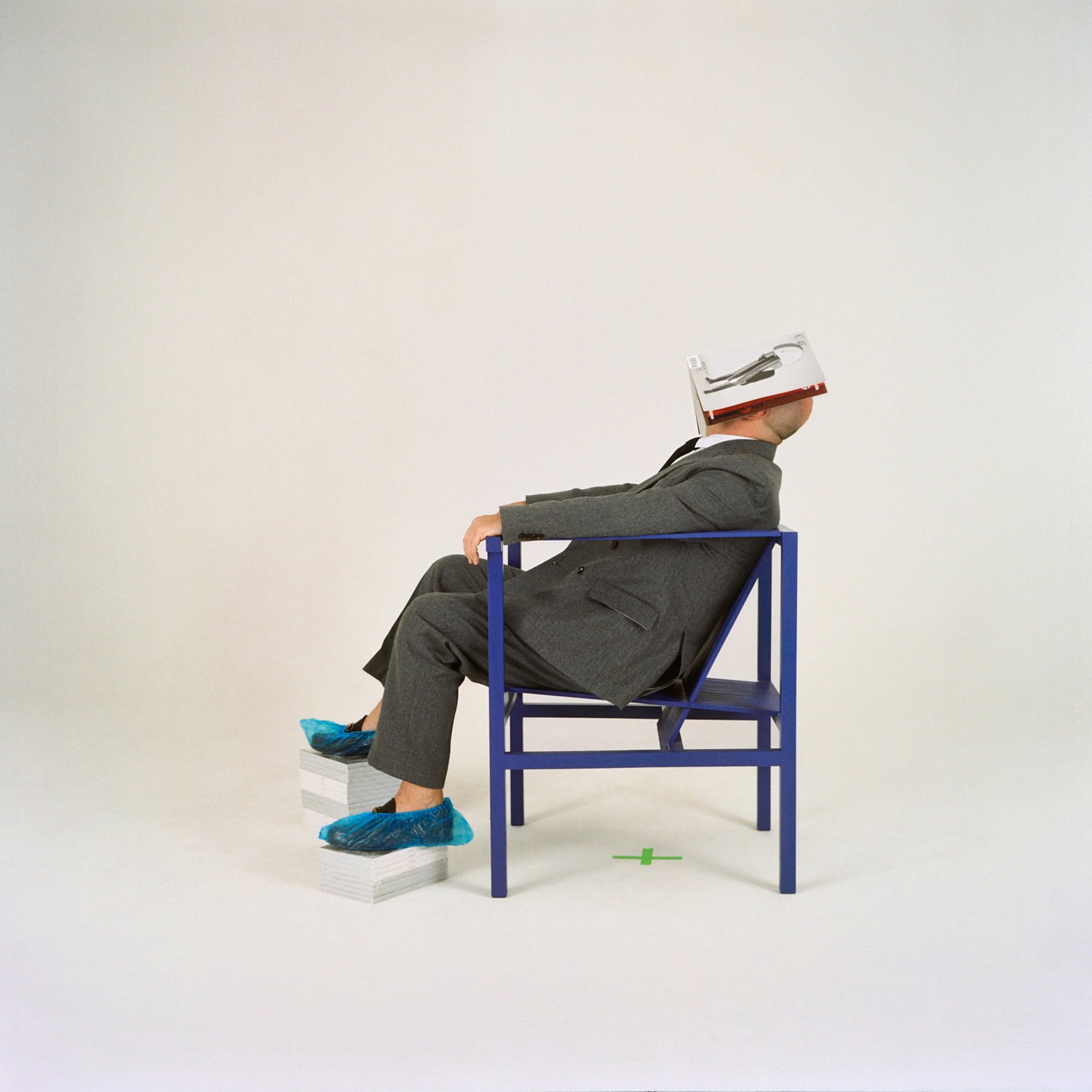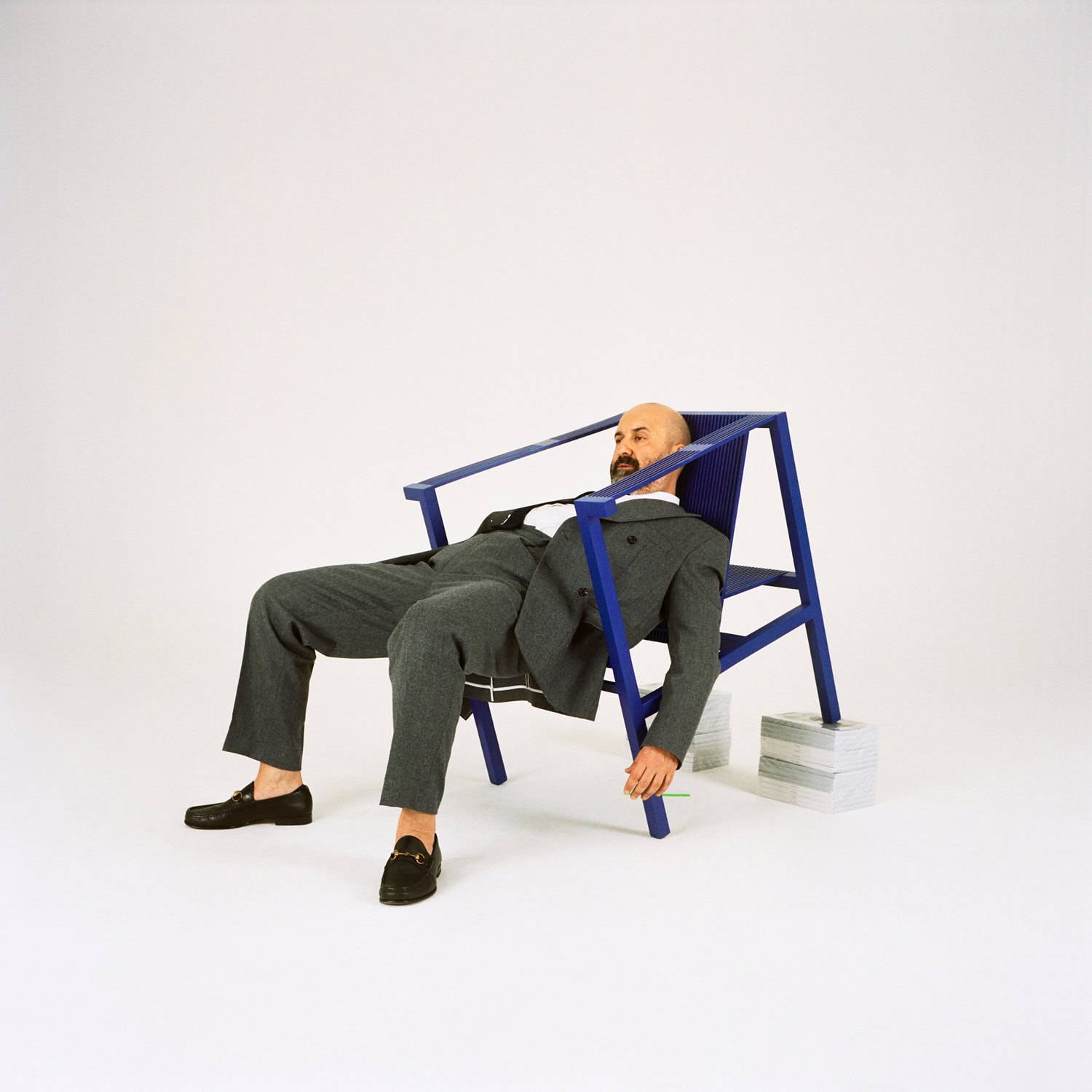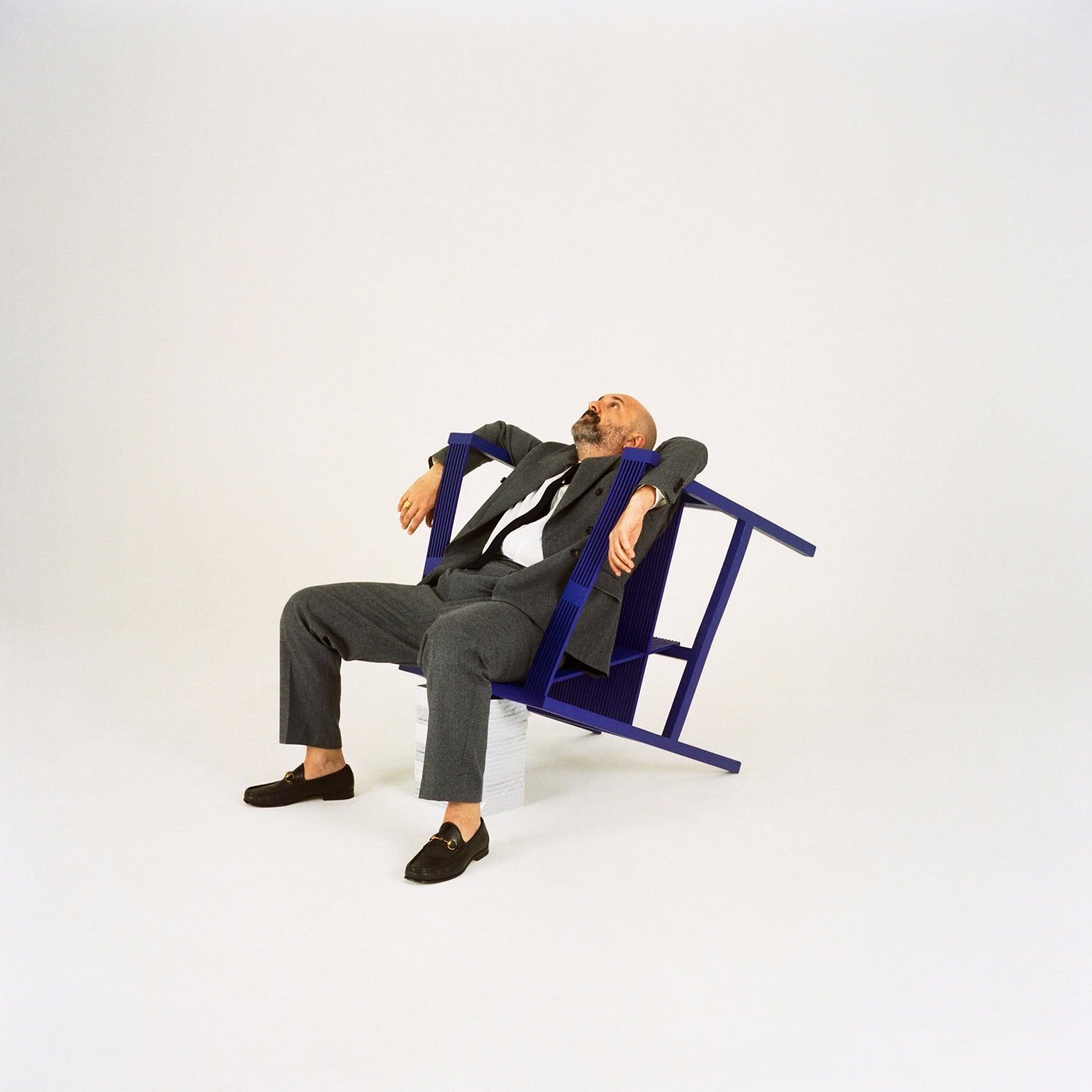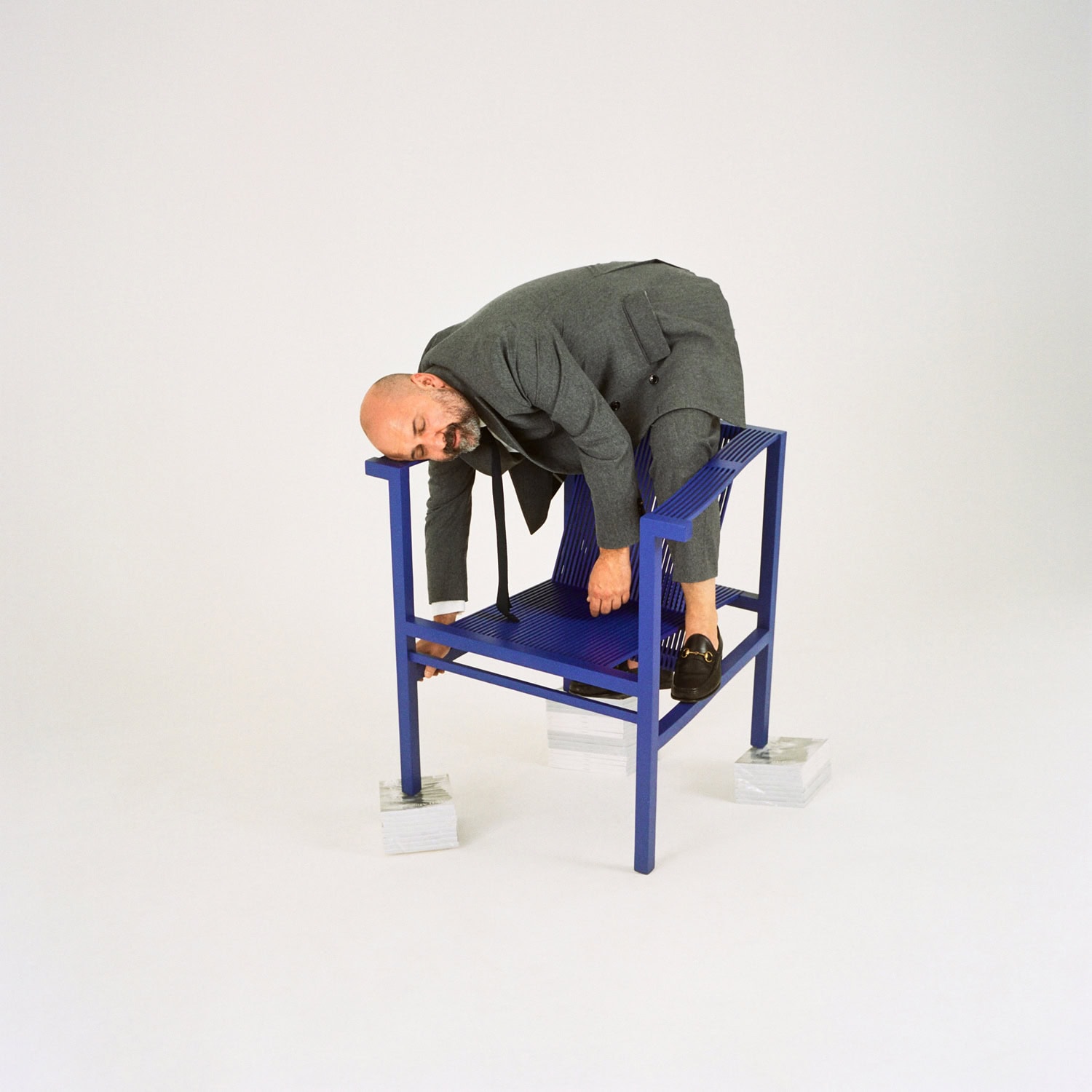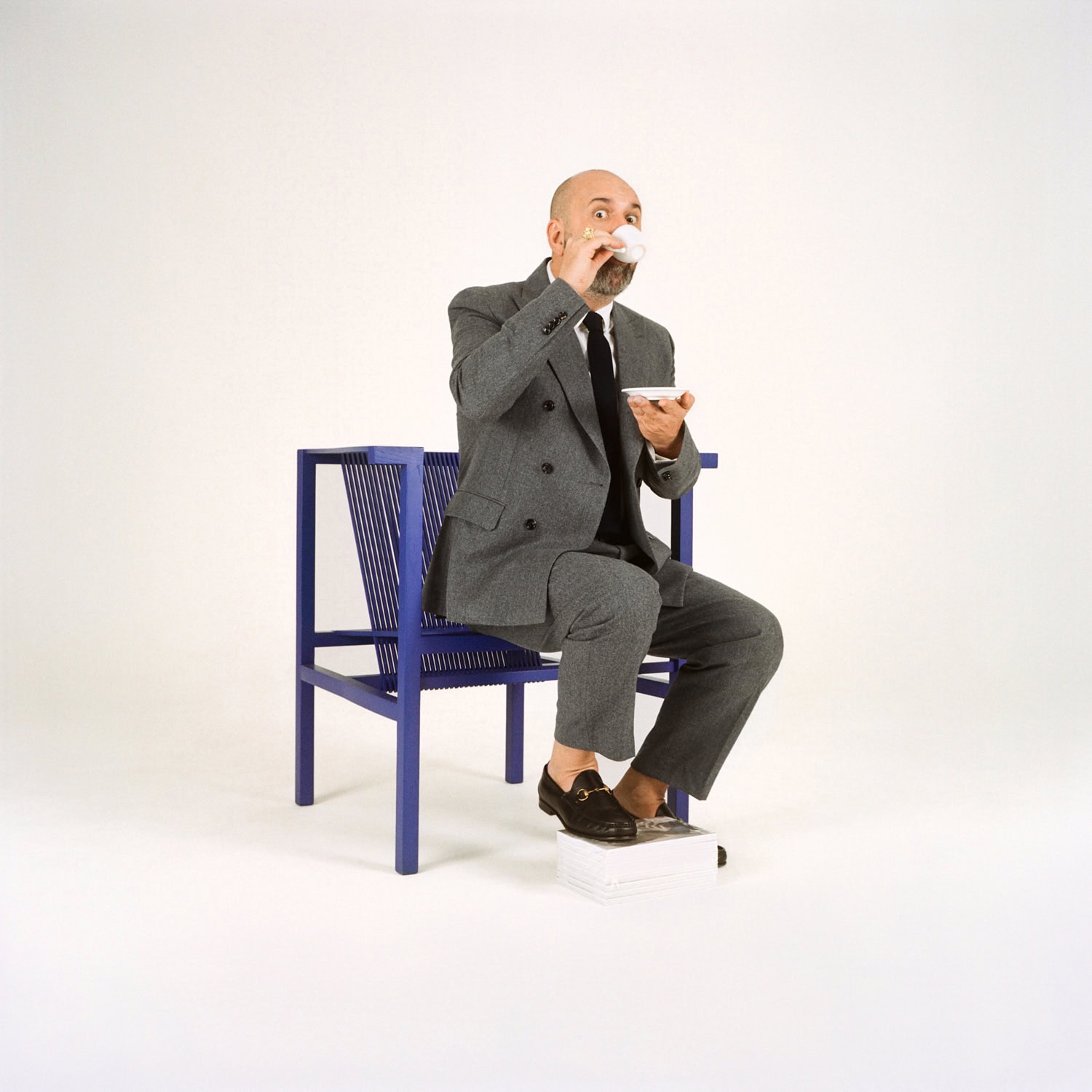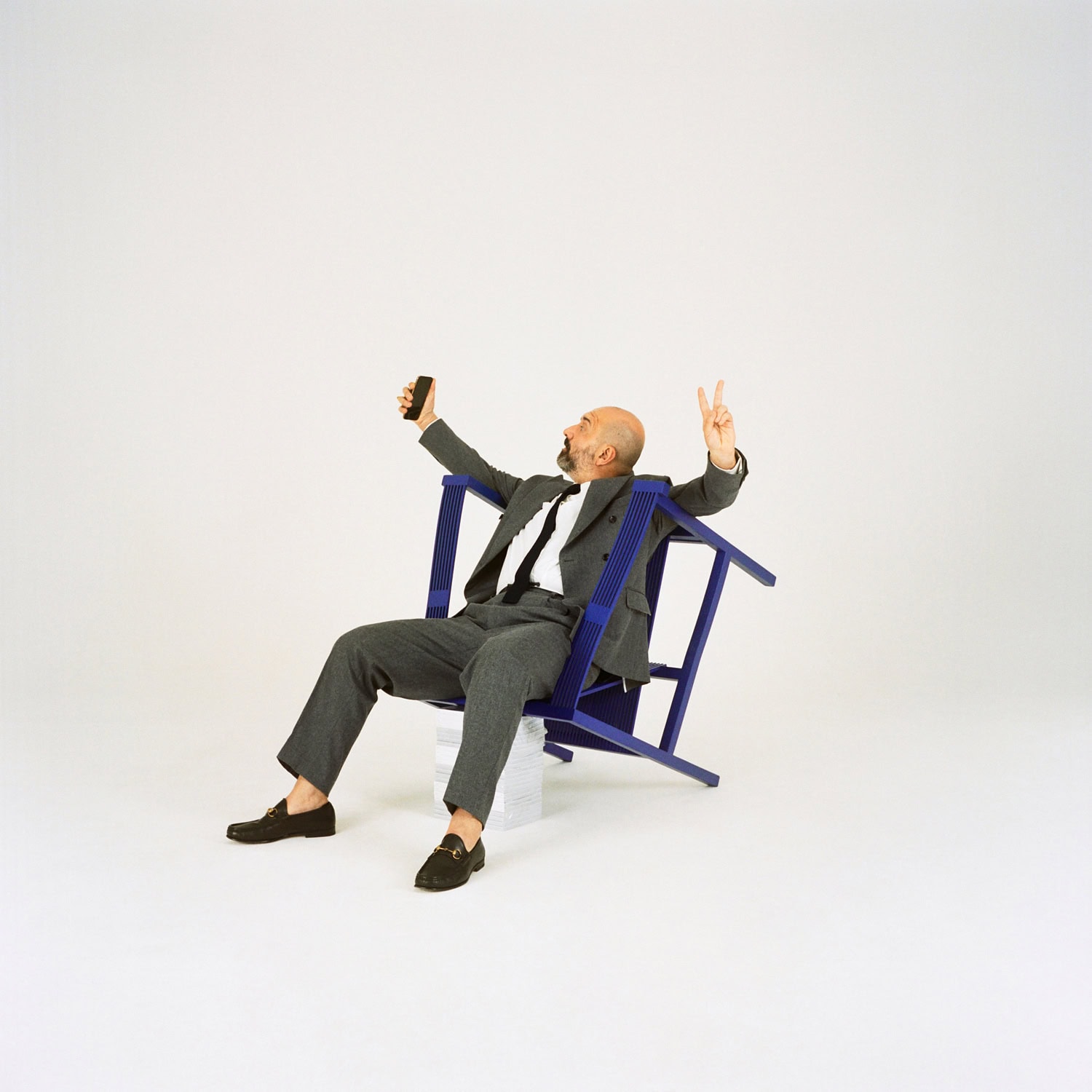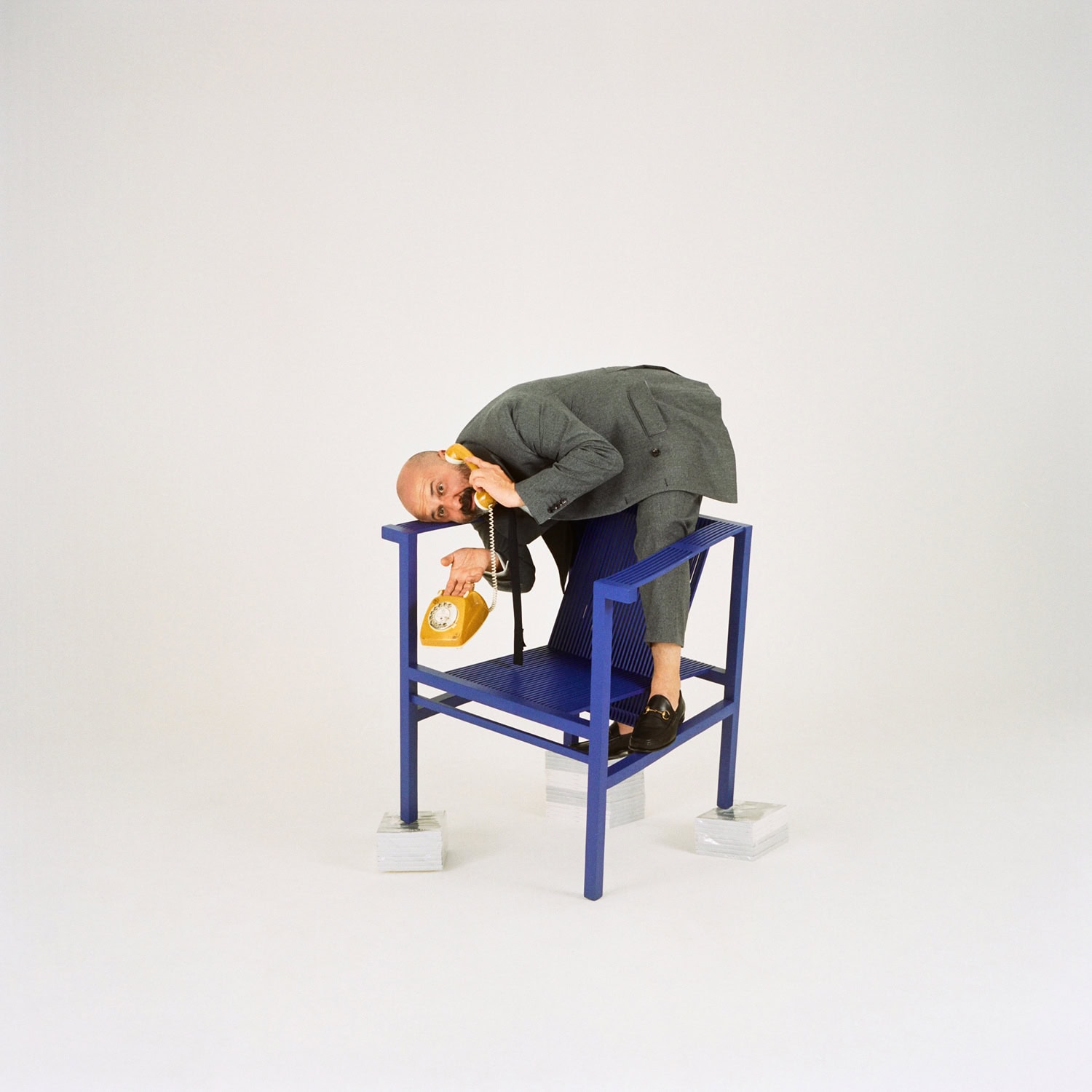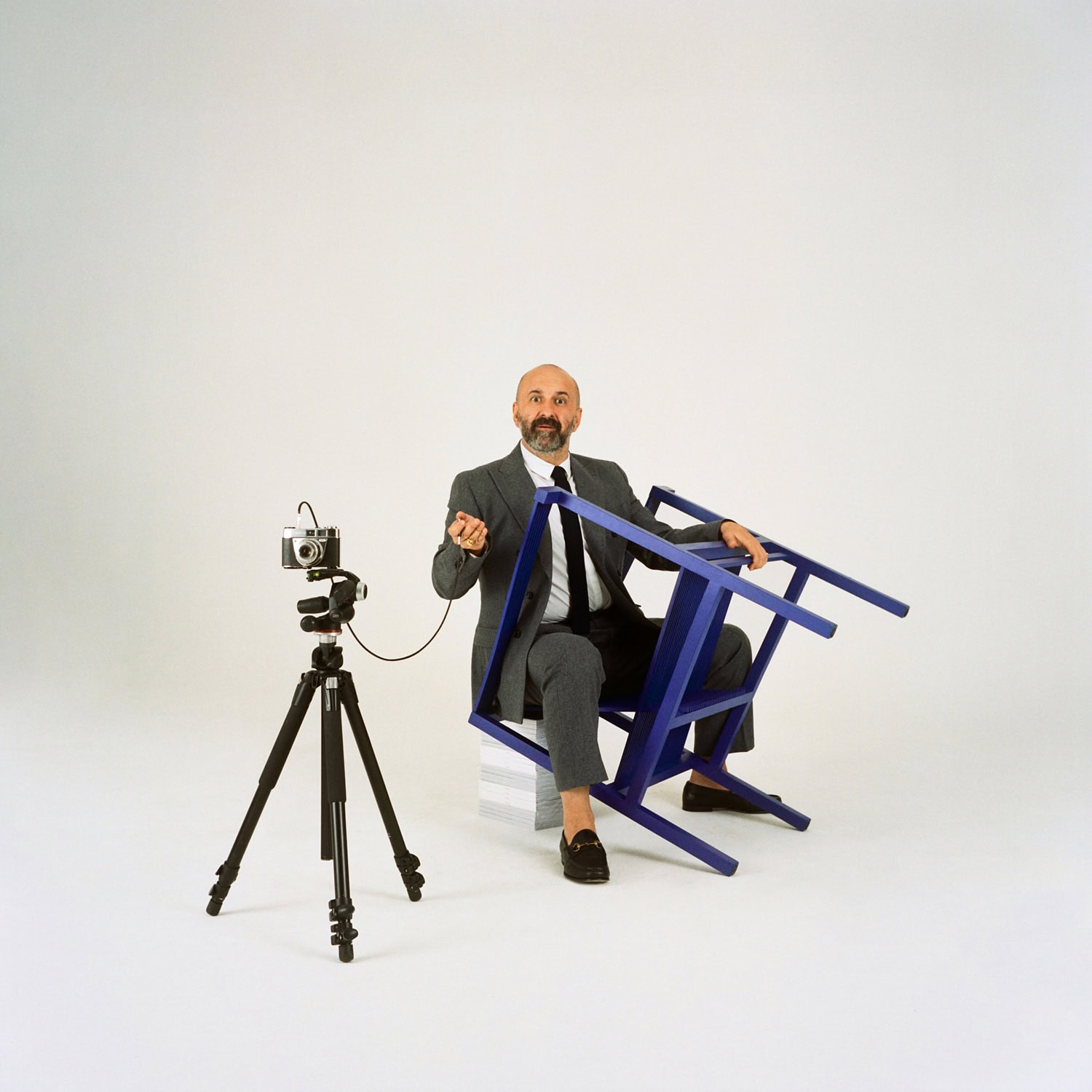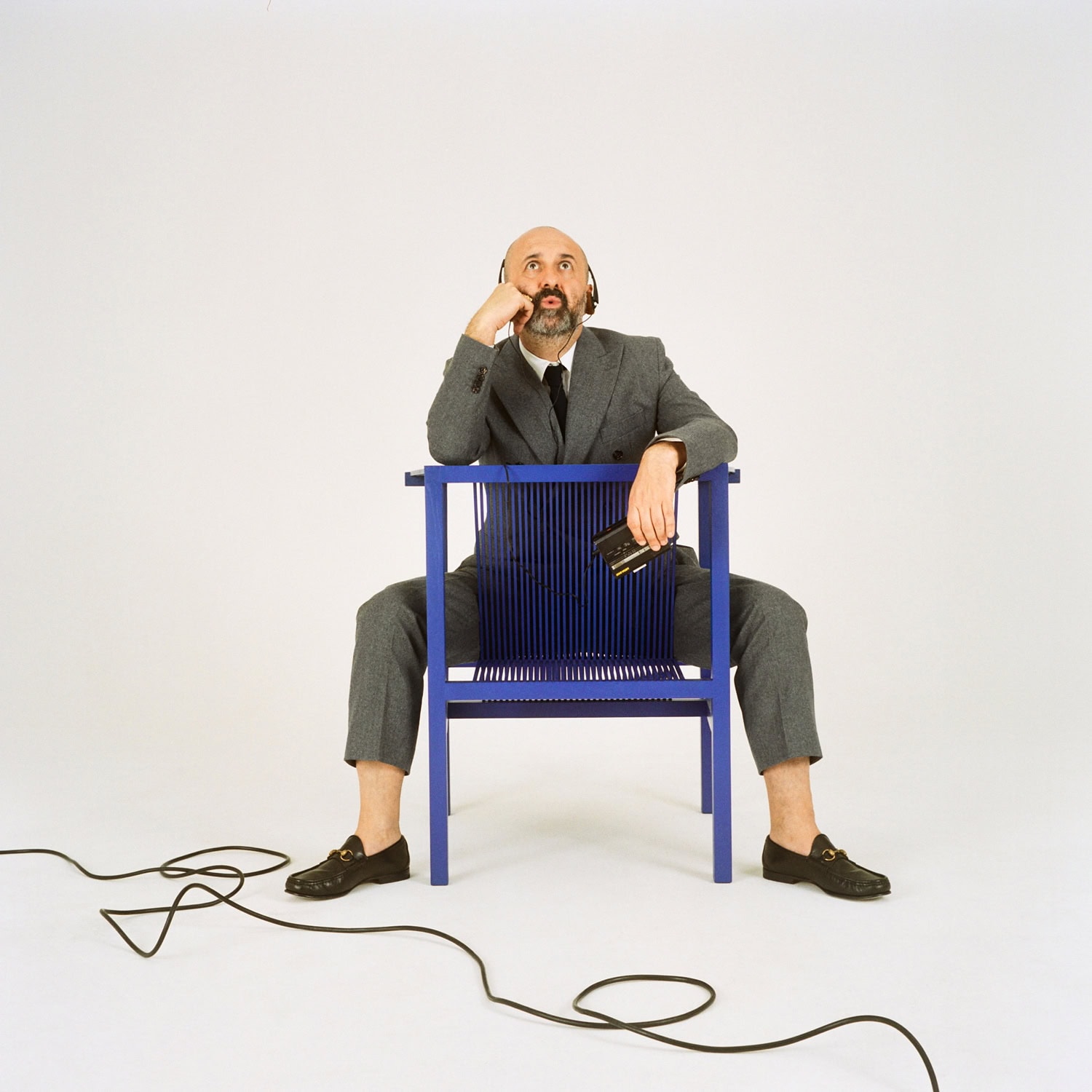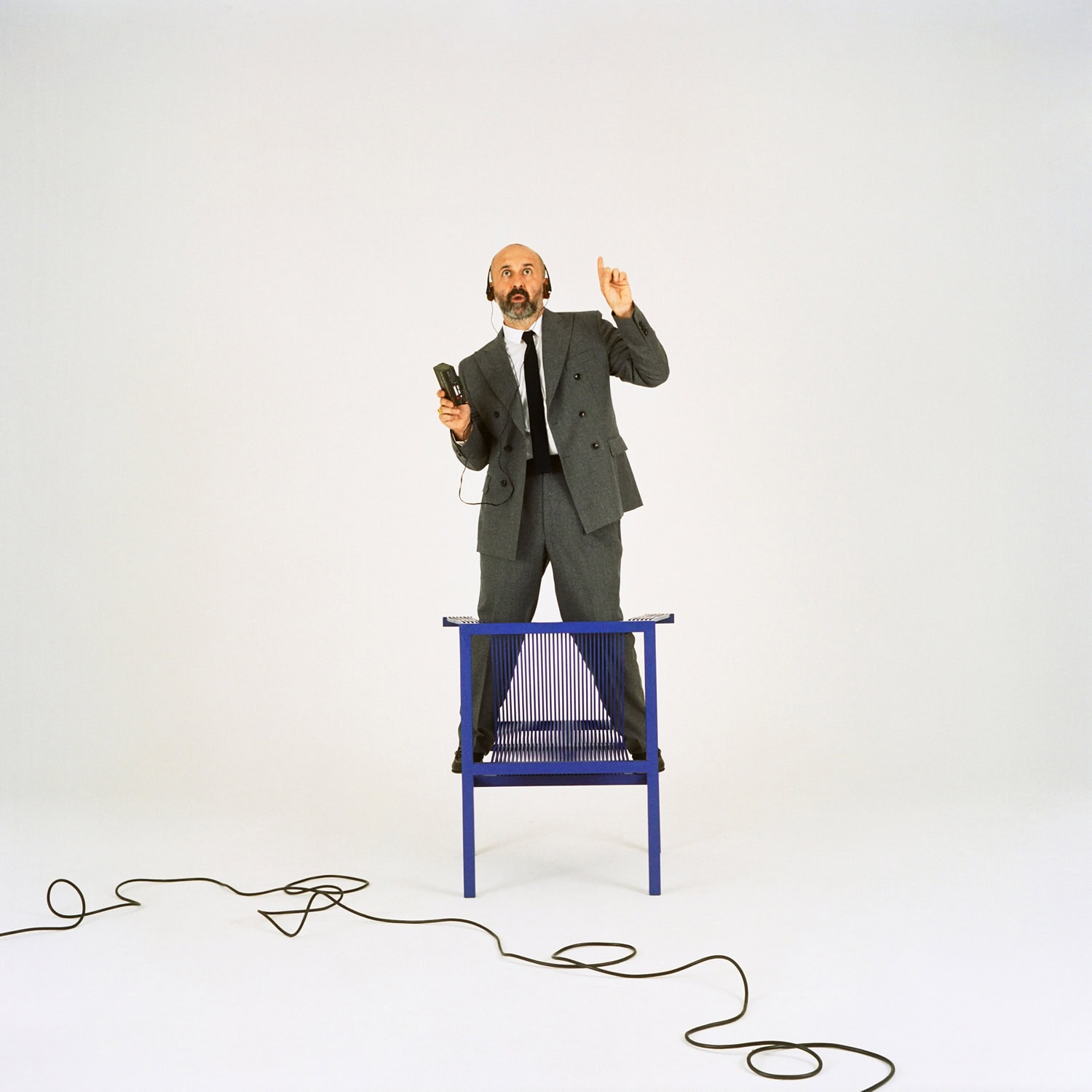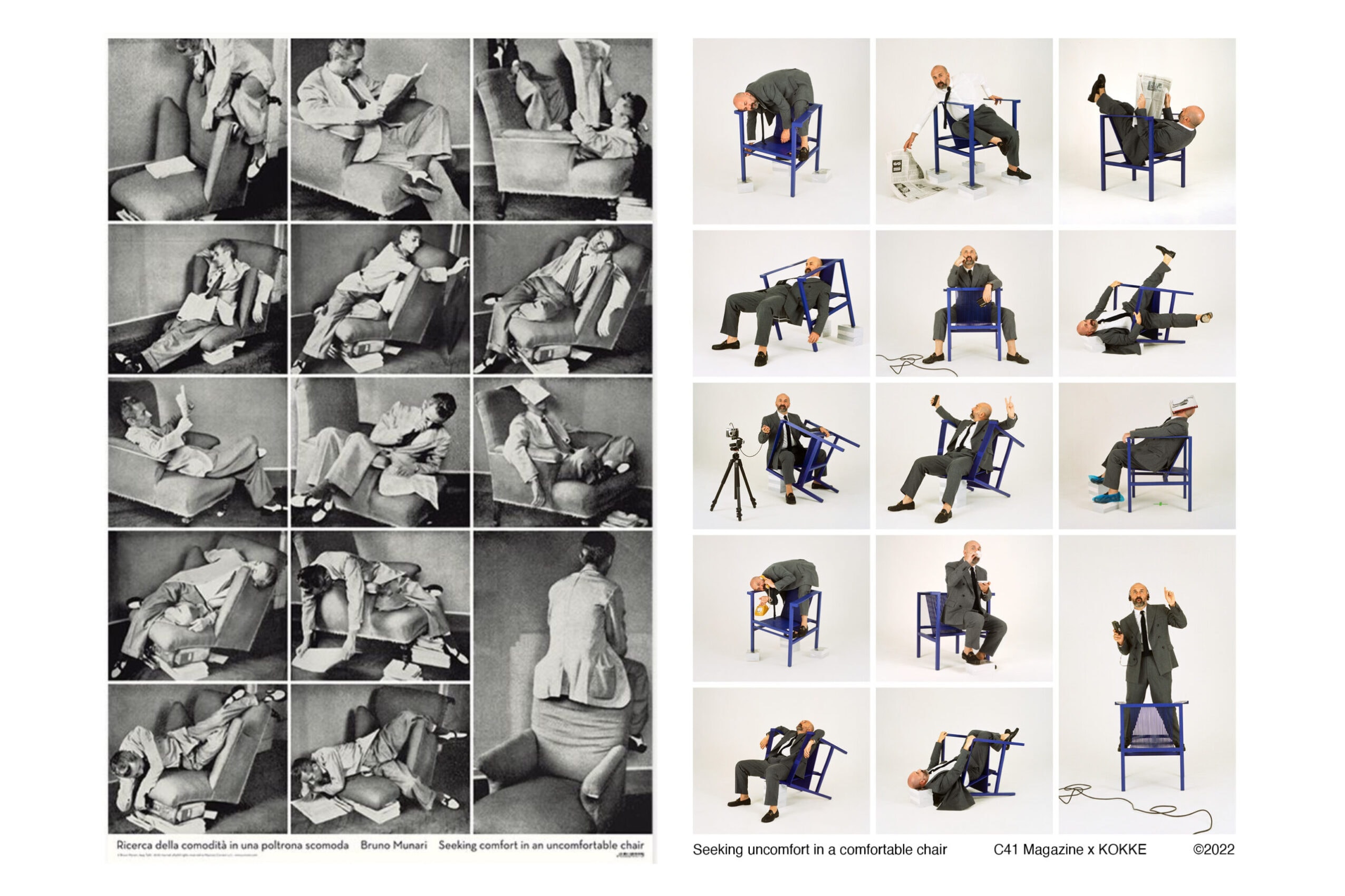A fresh editorial produced by C41 Magazine with the friendly collaboration of KOKKE HOUSE. What if Munari lived in 2022? Freely inspired by “Seeking Comfort in an Uncomfortable Chair” (Domus, 1944). Poster by Corraini.
It was 1944 and Bruno Munari produced a series of images for Domus entitled “Seeking Comfort in an Uncomfortable Chair” (Ricerca della comodità in una poltrona scomoda) in which the bourgeois archetype of the domestic armchair is almost mocked, a seed ready to germinate of that Italian approach to ironic and desecrating design that would characterise the decades to come.
In 1984, forty years after that article, Ruud-Jan Kokke, a Dutch designer, made a wooden chair for a friend, making it with his own hands in his own workshop. That chair would be the first in a series of furniture pieces that the Dutch designer would create over the years and which, despite not reaching mass production, would end up being part of the permanent collections of some of the world’s most important museums; from MOMA in New York to The Stedelijk Museum in Amsterdam, from Cooper Hewitt to the Boymans van Beuningen Museum.
Another 40 years passed and Romy, Ruud’s daughter, decided to take up her father’s design legacy and give birth to KOKKE HOUSE, a new furniture brand that will exhibit its products for the first time in Italy during the Salone del Mobile 2022. It is the first step of a brand that intends to pursue a timeless design concept, in which formal virtuosities give way to constructive details, to a material used with wisdom to the utmost of its possibilities, and in which the relationship of affection towards each object is strengthened with time, use, contact and experience.
It seemed natural, therefore, to accompany the launch of this brand with a series of images that, starting with Munari’s images, ironically interpreted the “Fauteuil 21” chair, the first member of the KOKKE HOUSE family.
Almost 80 years later, just as Munari did with the armchair in his living room, Leone plays with the rigour and dryness of the chair designed by Ruud, as if to close a time circle that began with the desecration of an icon and now welcomes a new one.
TOMMASO CALDERA: How are you? Are you ready for the upcoming Salone del Mobile?
ROMY KOKKE: Pretty good, thank you. Yes, we are ready! We are working on the final details to make sure everything will look nice. And we think it will! We’re very excited.
TOMMASO: What are you setting up for the event?
ROMY: We are setting up our new launch for the Fauteuil 21. It is a chair that my father designed 35 years ago, and we are re-launching it now. It is a limited edition of 50 pieces, in special ultramarine colour (ultramarine blue, a very unique one) and he made different illustrations for each piece. It could be considered the launch of the new brand that we are founding together. Before we only had it in natural colour and black, but now this new colour is the new us.
TOMMASO: How is Salone del Mobile perceived in the Netherlands? Because I guess the perception of the event can be different between the countries… I wanted to know if it has the same impact it has here in Italy. What would you say about it?
ROMY: As far as I know, it is one of the biggest events you can be on. Every year we’re all like: “Are you going? What did you see?”. All the designers we know go there. I’d say it is a big thing for us too. Especially the spreading through the whole city: I think it makes it even more interesting.
TOMMASO: I’m happy to hear that. So, let’s talk about KOKKE HOUSE. Could you please tell us the story of the brand and the reason why you decided to give a second life to this collection?
ROMY: We started this family business, together with my husband, as a place where we can release and show all the design projects that artists made within our family. We started with the iconic design my dad made. He started 35 years ago to design furniture—is it right?
RUUD: Yes!
ROMY: His projects were picked up by important museums like MoMA NY and Stedelijk Museum in Amsterdam. The fact is he designed these items, and he went on designing, but he never really did anything with them on a big scale. Some people noticed his work and they brought it into museums, but he just liked designing and making something new. As a child, I grew up in between all those projects and artworks of my mom, which was for me very normal, but as you grow older you realise that it is very special. In every house I lived in, I always took all the furniture pieces that I loved with me. I stole them from my dad, and so I did with the paintings of my mom. We used to live in a tiny house, but it was filled with all of these things anyway. Last year we finally built a bigger house and, when all our friends came by, they looked like they saw the furniture for the first time, even though we have had it our whole life. We have always worked together, but then we felt like we had to do something with these beautiful projects that we have. So we went to my parent’s basement. They have really big storage where all their old samples and everything is…
TOMMASO: That is also your studio, Ruud?
RUUD: Yes, we live on a formal farm—an old farmhouse. There are three houses: one is the studio, one is where we live and the other one is the storage, but also the studio of my wife. And they are all stocked, piled up and dusty.
ROMY: I love to be there and look through what they have. We actually found some amazing pieces there. And then we found a big box with his archive work. There were pieces that we’d never really seen before and they were so beautiful and detailed! Everything was in there and just beautifully filled, so we thought: “We have to show this—to show people what is in here!”
TOMMASO: And what is your background, Romy?
ROMY: My background is fashion design.
TOMMASO: Okay, so you are a fashion designer?
ROMY: Yeah—well—I use to. I have been working for my dad since I was young, but then I felt like I wanted to go in a different direction and that’s why I studied Fashion at ArtEZ in Arnhem Fashion Design. But after a few years of working in fashion, I started my own company to design furniture for fashion stores and I designed interiors for them. From that, we started working on other projects, like houses and products. And that’s when I realised I had a lot to learn from my dad and I did. I think this is amazing: I found out he has a lot to teach.
TOMMASO: I can imagine… You sent us a couple of movies about Ruud building his chars. I guess that, in your design process (Ruud), everything starts from the workshop. Or maybe I’d better say everything starts in the workshop, working with materials, with your own hands. Do you think it’s possible to combine this crafted approach with a wide and industrial distribution?
RUUD: Well, I think it is. The reason is that the whole project is kind of handmade. When you draw things, think of things and design things you do it with your head. And the things you design are things that already exist because you already have them in your head. As soon as you start drawing, but more especially when you start making them, new things start to happen. Things that maybe you couldn’t imagine. And that is a very interesting process. This is how I worked when I was younger and still how I work now. I also do a lot of architectural projects and still, I make things with my hands. If something goes wrong, for example, you try to cut a little mottle and you cut it wrong, the wrong cut is the better cut. That is how things grow and the best things start to happen —where you could not have thought of, and that’s what process means.
TOMMASO: And what about now? Have you found a supplier network or do you still make everything with your hands?
RUUD: With my hands, I make special designs, for very small productions or museums. But there are also big factories that come to ask me if I can design commercial products. So, for example, I worked for Auping, which is a big bed factory in Europe. I designed for them but also for other furniture companies. And that was successful. Of course, we earned money with it and so, later on, I started with interior projects and then outside projects and architectural projects. That is exactly how my career went. Just last week, with our architecture team, we won the prize for the best building in the Netherlands this year, so we are still very active!
ROMY: We hope we can design a lot more, but for now we also have a lot that is already there.
TOMMASO: Looking at your Instagram account I see that you decided to have this very contemporary identity. Do you think that this kind of balancing is necessary for a brand that produced products designed decades ago?
ROMY: Yes, absolutely. I think, when you have these iconic designs, you have to make sure that you do the right thing to give them justice, to reflect what they are. But, at the same time, you have to build a brand. The concept behind it is the paradox between my father and my mom. We believe that the contradiction they have in their work is what works so well and what KOKKE HOUSE is. Of course, I am the combination of them, and that’s why I’m trying to make sure that the identity we’re creating reflects how I am. We don’t worry too much about what other people do and how: we try to stay close to ourselves, which I think is the only thing we can do. I hope it works.
TOMMASO: Yeah, I think it works. There’s a good balance between having these iconic pieces of furniture and this contemporary brand identity. I think that this brand identity tells your story. You have the heritage from the past, combined with this new and refreshed approach.
ROMY: Yes, that’s exactly it, because we want to show the heritage but also the old designs that people have had for years already. We’re trying to find a way to show it, but also really to make it new and not only dusty. It’s good to hear that you can see that.
TOMMASO: What do you think a contemporary design brand should be focused on? Some brands decided to focus on materials, some on language, and others on something else. What do you think it’s the right choice for 2022?
ROMY: That’s also what we’re asking ourselves all the time: where we try to work with, what we have, why we design. And if we read the words that he sets for his inspiration for the chair, everything’s so beautiful. And it’s just such an interesting way to look at things. If you hear my mom talking about her work and concept, she has tried to make that the lead of the way we’re going. I’m not good with words, but we’re good with showing things and I think my parents both have a poetic way of telling things. So I’m trying to take those words and translate them visually.
RUUD: Well, maybe it’s interesting to say what the jury said last week about this building. They were talking about my contribution to the project, which was a contemporary craft. And, for being a long time craft, it was a very contemporary craft. I think there is attention on the revival of pure things because they’re somehow eternal. What is also very interesting is that we see people touching the chair: everyone wants to touch it! “How can this be? It’s so thin and only made of wood. How is it now breaking? Can I sit on it?”. That’s also what I like to achieve with my work. That you will have a moment of awareness. If I ask you now: on what chair do you sit now? You have to look and notice it. You know, sometimes I give lectures. And I ask everyone: “Have you seen the chairs you sit in?”. No, they just went to sit. But if you sit in my chair, you feel that you sit, because you try it a little bit more carefully. You feel your bottom, you feel your back, you feel your body. For a moment, you’re conscious. And I think that is an interesting moment.
TOMMASO: Do you think that it’s possible to create a timeless language in a product? And what do you think that “timeless” means, when talking about a product?
RUUD: Well, what I said about awareness and being surprised. So, I can say that good design it’s when you notice it. It doesn’t have to be beautiful or ugly, but it needs to be noticed. If you don’t notice it, to me, it’s not good. So that’s actually what I’m trying to do. Not especially trying to do, but that’s my nature. So it’s not my age, it’s not my life, it’s just what I do. To think about things with a kind of new mindset. So, not just make a chair, if you want to make a chair out of wood. Well, wood is wood. Wood is growing outside. What kind of woods is growing there? And which wood is best for which part? That’s how I design, how I think. And I think if you do that, if you try to make a very pure design, then you tend to make something good for all times. You do it with respect. You treat the woods with respect. And you treat the people who see and sit on it with respect. I never intended to make something that looked like something else. I just want to make something that is what it is, and I think that is maybe something that results in classic furniture. I was very surprised that the museums wanted my furniture into their collection. With the MOMA, they give you a letter. It says: “We are very proud to announce that you’ve been selected for the permanent collection”.
TOMMASO: So the chair was simply right.
RUUD: Yeah. And also in Germany, Stockholm, Copenhagen, Berlin, and München. Not just in one museum, but in many more.
ROMY: It also took us a while to realize that it’s so special because for him it was just normal. For us, it used to be normal, but now we realize how special it is. And then sometimes he just says something like: “Oh yeah. I sold these items here and there, and to this person”. And we’re like: “But that’s very special. You have to tell us because we like to know it”. There’s so much more that we find out just because he’s talking about it, and we hear and we write it down.
TOMMASO: Romy and Ruud, I would like to show you an image. Have you ever seen it? It’s a series of pictures made by Bruno Munari, the title of this project sounds like “Seeking Comfort in an Uncomfortable Chair” (Ricerca della comodità in una poltrona scomoda). This series of pictures talk about the ironic approach to design that we had in Italy during the Fifties, Sixties and Seventies. So, my question is: which main difference can you see between the Italian design heritage and the Dutch design one? This ironic approach was typical in Italy, but maybe, in the Netherlands, it was different. Do you notice any difference?
RUUD: Well, what is surprising about these pictures is they made me think of a movie from KOKKE HOUSE, made by Dutch TV, in which there are sketches in between and they turn over a couple. The couple sit on the chair backwards. So that is what I see here. One day, they have the serious part of the movie and also try to make a joke out of it, with a kind of sketch. So that’s what I see here. But I can’t say this is typical Dutch. No, the Dutch approach is more serious. I think this is very interesting what I see here, from the Italians. I’ve never seen it, by the way.
TOMMASO: In conclusion, I’d like to ask you something about the future of KOKKE HOUSE. What is going to happen?
ROMY: Well, we started with his design because he is already well-known and it felt like a logical step to start with. But now we’re working on a “new” design together—my dad and me—and it’s an old one that he designed 35 years ago. We are reworking it and making it more contemporary. We’re also working together with my mom. She is an artist and she made some amazing paintings. As I explained, her approach it’s very different from my father’s one. But we really like to make a big real house where all the items and old designs fit together, but still have their own identity.
TOMMASO: And do you already have new products in the pipeline?
ROMY: Yes, many. We were trying to slow down a bit because we have so much and it’s not super smart to put it all out at once. So, now we have the Fauteuil 21 and then we have the dining room chair (it’s from the same series). And then from that series, you also have a bar chair. And then we have another chair that he designed completely made out of wood connections. After that, he made a chair completely out of glue. He wanted to challenge himself with no wood connection at all. And, he used McNelly and glued them together with a Birch triplex. It really looks like a piece of art. We are already introducing that one and slowly trying to make a logical step into introducing more. But I think we have so many beautiful items.
TOMMASO: I’m sure about it. Thank you so much for your time! It’s been a pleasure. I wish all the best for you and KOKKE HOUSE and I will see you in Milan!
RUUD & ROMY: Yes. Thank you! See you there!
